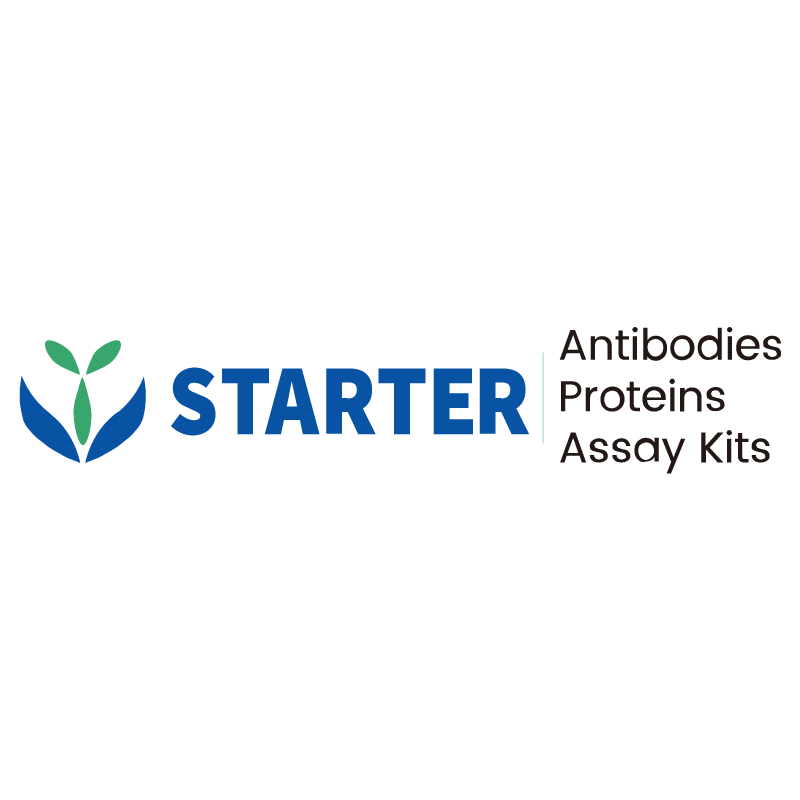WB result of Acetyl-CoA Carboxylase Rabbit pAb
Primary antibody: Acetyl-CoA Carboxylase Rabbit pAb at 1/1000 dilution
Lane 1: HepG2 whole cell lysate 20 µg
Lane 2: HeLa whole cell lysate 20 µg
Lane 3: HEK-293 whole cell lysate 20 µg
Secondary antibody: Goat Anti-rabbit IgG, (H+L), HRP conjugated at 1/10000 dilution
Predicted MW: 265 kDa
Observed MW: 270 kDa
This blot was developed with high sensitivity substrate
Product Details
Product Details
Product Specification
| Host | Rabbit |
| Antigen | Acetyl-CoA Carboxylase |
| Synonyms | Acetyl-CoA carboxylase 1; ACC1; Acetyl-Coenzyme A carboxylase alpha (ACC-alpha); ACAC; ACCA; ACACA |
| Immunogen | Synthetic Peptide |
| Location | Cytoplasm |
| Accession | Q13085 |
| Antibody Type | Polyclonal antibody |
| Isotype | IgG |
| Application | WB |
| Reactivity | Hu, Ms, Rt |
| Positive Sample | HepG2, HeLa, HEK-293, NIH/3T3, PC-12 |
| Purification | Immunogen Affinity |
| Concentration | 0.5 mg/ml |
| Conjugation | Unconjugated |
| Physical Appearance | Liquid |
| Storage Buffer | PBS, 40% Glycerol, 0.05% BSA, 0.03% Proclin 300 |
| Stability & Storage | 12 months from date of receipt / reconstitution, -20 °C as supplied |
Dilution
| application | dilution | species |
| WB | 1:500-1:1000 | Hu, Ms, Rt |
Background
Acetyl-CoA Carboxylase (ACC) is a crucial metabolic enzyme that plays a central role in fatty acid metabolism. It catalyzes the carboxylation of acetyl-CoA to malonyl-CoA, the rate-limiting step in fatty acid synthesis. ACC exists in two isoforms: ACC1 (ACACA), primarily localized in the cytosol and regulating fatty acid synthesis, and ACC2 (ACACB), which is associated with the outer mitochondrial membrane. The malonyl-CoA produced by ACC2 inhibits carnitine palmitoyltransferase-1 (CPT-1), thereby regulating fatty acid β-oxidation. The enzyme is tightly controlled by multiple mechanisms, including allosteric regulation (activation by citrate, inhibition by long-chain acyl-CoA), reversible phosphorylation (inactivation by AMPK and PKA), and transcriptional regulation (e.g., SREBP-1c-mediated expression upregulation). Due to its pivotal role in energy metabolism, ACC is a potential therapeutic target for obesity, diabetes, and cancer, with inhibitors (e.g., TOFA, ND-630) currently under investigation. Additionally, plant and bacterial ACCs are targets for herbicides (e.g., aryloxyphenoxypropionates) and antibiotics, highlighting their broad biological significance.
Picture
Picture
Western Blot
WB result of Acetyl-CoA Carboxylase Rabbit pAb
Primary antibody: Acetyl-CoA Carboxylase Rabbit pAb at 1/1000 dilution
Lane 1: NIH/3T3 whole cell lysate 20 µg
Secondary antibody: Goat Anti-rabbit IgG, (H+L), HRP conjugated at 1/10000 dilution
Predicted MW: 265 kDa
Observed MW: 270 kDa
This blot was developed with high sensitivity substrate
WB result of Acetyl-CoA Carboxylase Rabbit pAb
Primary antibody: Acetyl-CoA Carboxylase Rabbit pAb at 1/1000 dilution
Lane 1: PC-12 whole cell lysate 20 µg
Secondary antibody: Goat Anti-rabbit IgG, (H+L), HRP conjugated at 1/10000 dilution
Predicted MW: 265 kDa
Observed MW: 270 kDa
This blot was developed with high sensitivity substrate


